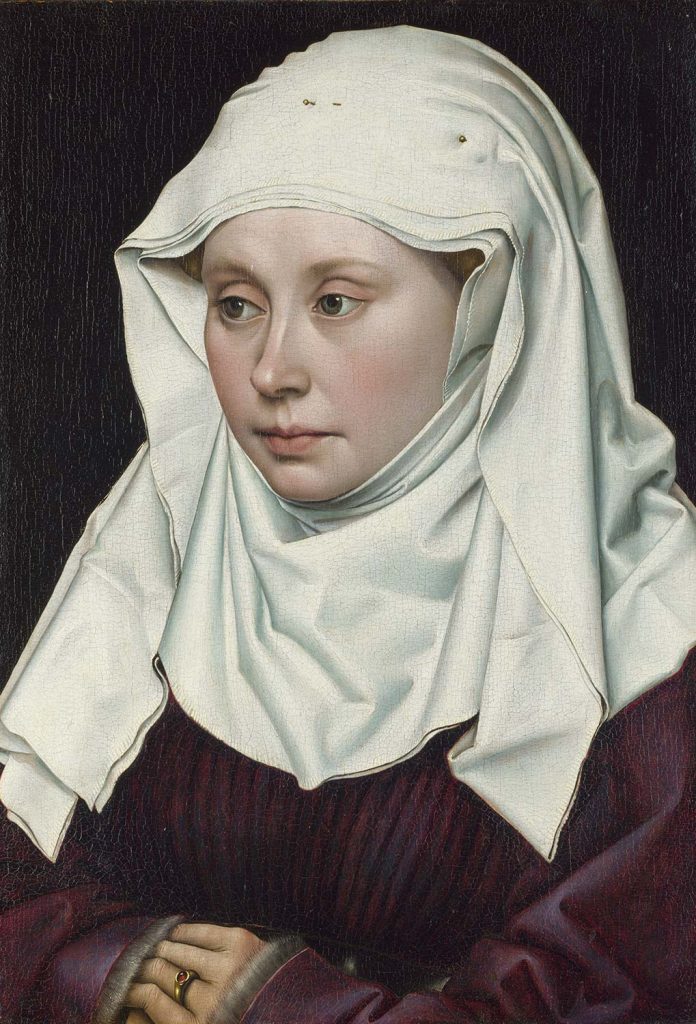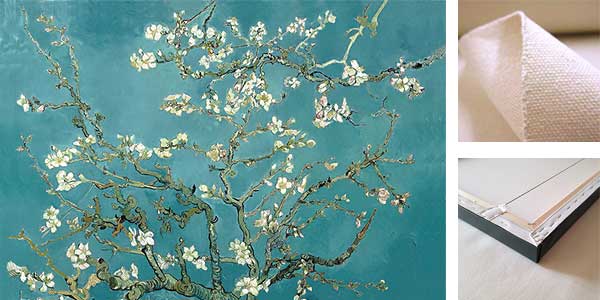
A Woman by Robert Campin was created in 1435. The painting is in National Gallery London. The size of the work is 40,6 x 28,1 cm and is made of oil on wood.
About the Work
This striking portrait of a woman forms a pair with Campin’s A Man – the sitters were clearly married. We are shown what the couple looked like, but Campin has conveyed their personalities and relationship too. The woman looks younger than her husband, and more forceful and optimistic.
Her rich, purple houpelande is pulled into narrow folds by a tight, wide belt and its sleeves are trimmed in grey fur. She wears a gold ring with a cabochon (uncut) stone, and an elaborate headdress, made of three pieces of white fabric which Campin has manipulated into geometrical folds. Around her neck is a barbet, a cloth worn by married women that covered the chin and neck. On her head is a enveloping howve, which forms two peaks over the modest horns made by her hairstyle. The edges of the cloth have been fluted or goffered – that is, crimped with heated irons, and the layers secured with pins. She, like her husband, is well dressed – but their clothes are not excessively rich. This suggests that they were prosperous townsfolk, perhaps from Tournai where Campin lived and worked, although we don’t know their identities. Read more in National Gallery London
About the Artist
Robert Campin (c. 1375 – 26 April 1444), now usually identified with the Master of Flémalle (earlier the Master of the Merode Triptych, before the discovery of three other similar panels), was a master painter who, along with Jan van Eyck, initiated the development of early Netherlandish painting, a key development in the early Northern Renaissance.
While the existence of a highly successful painter called Robert Campin is relatively well documented for the period, no works can be certainly identified as by him through a signature or contemporary documentation. A group of paintings, none dated, have been long attributed to him, and a further group were once attributed to an unknown “Master of Flémalle”. It is now usually thought that both groupings are by Campin, but this has been a matter of some controversy for decades. Read more in Wikipedia
Order a reproduction of this work (printed on canvas)
